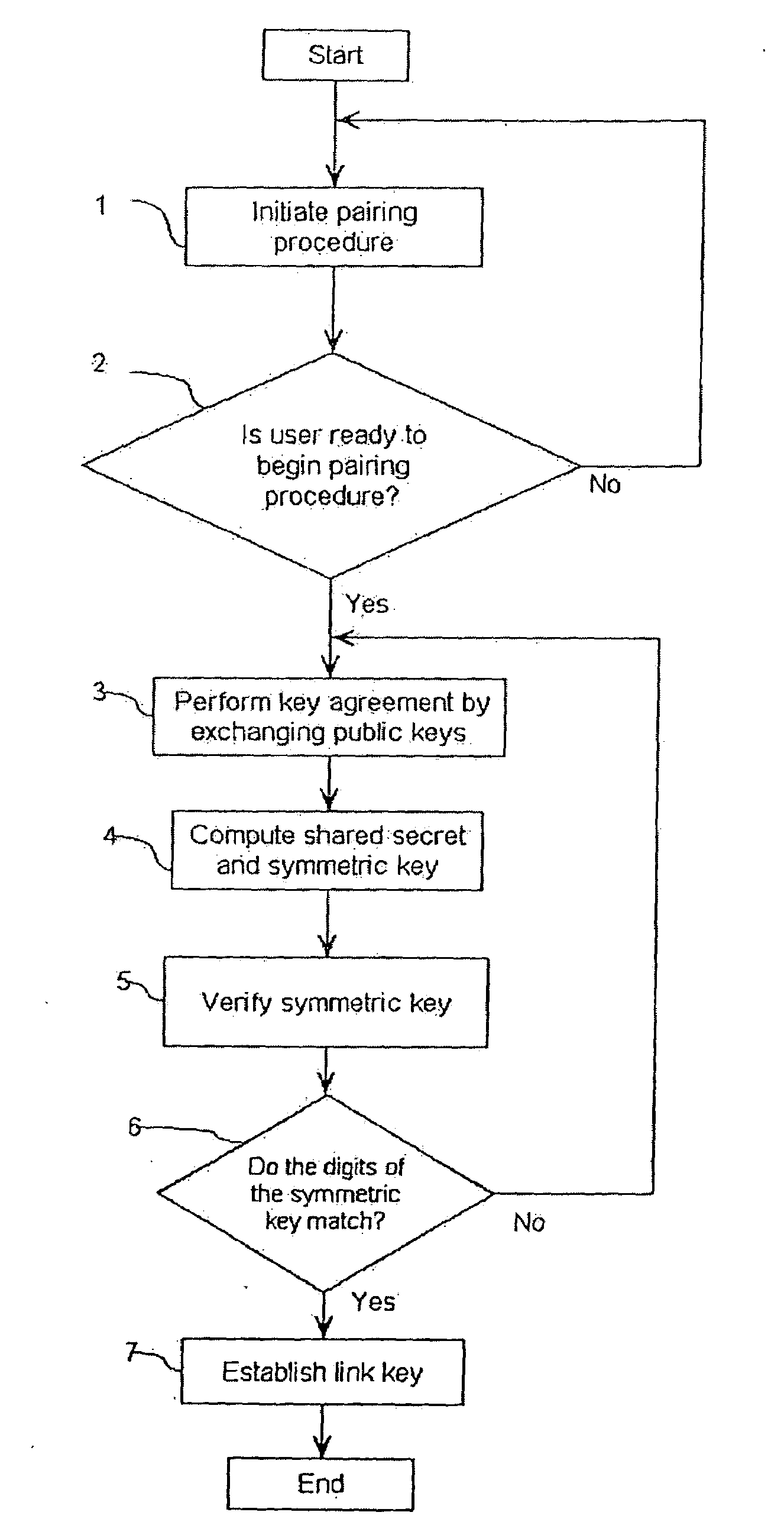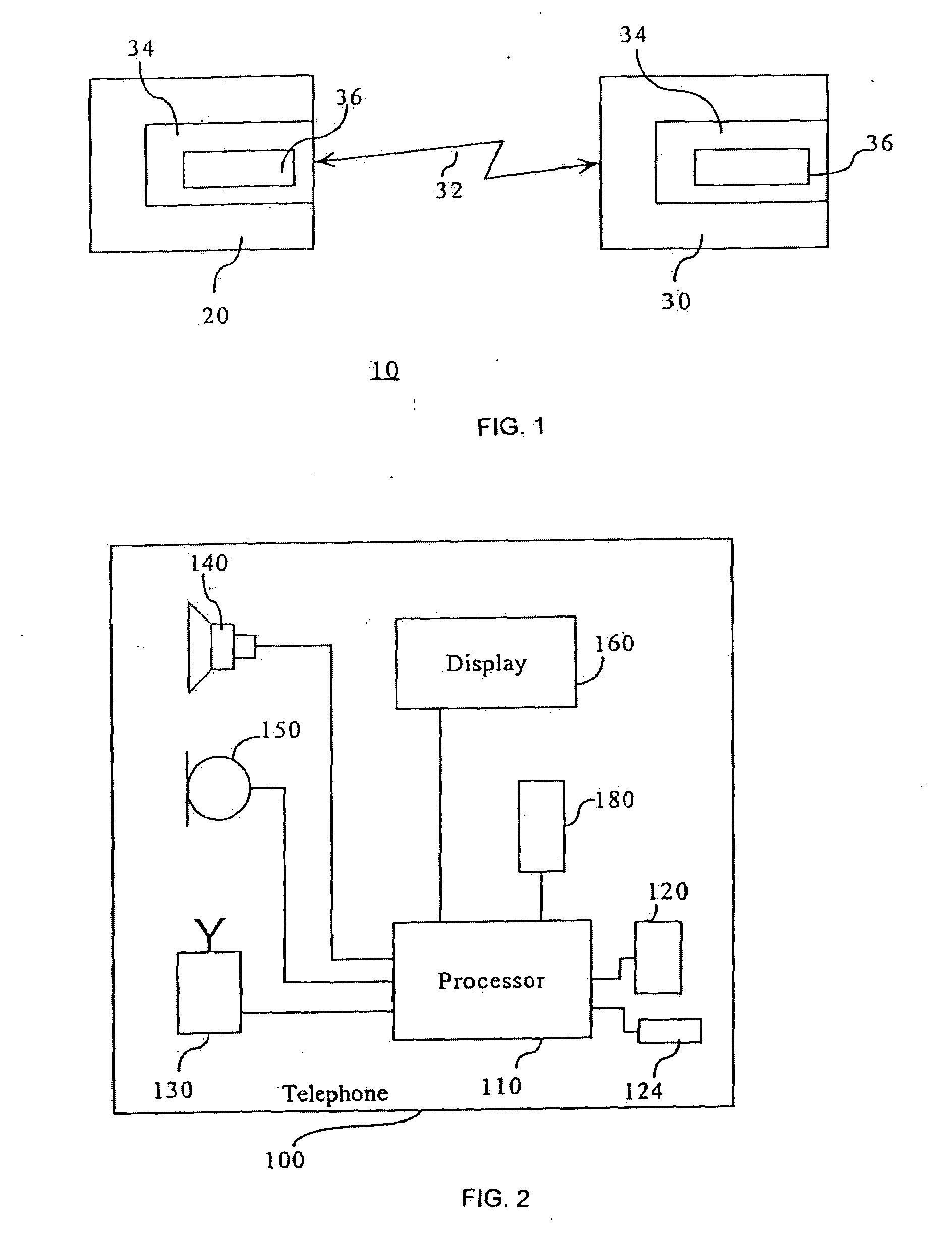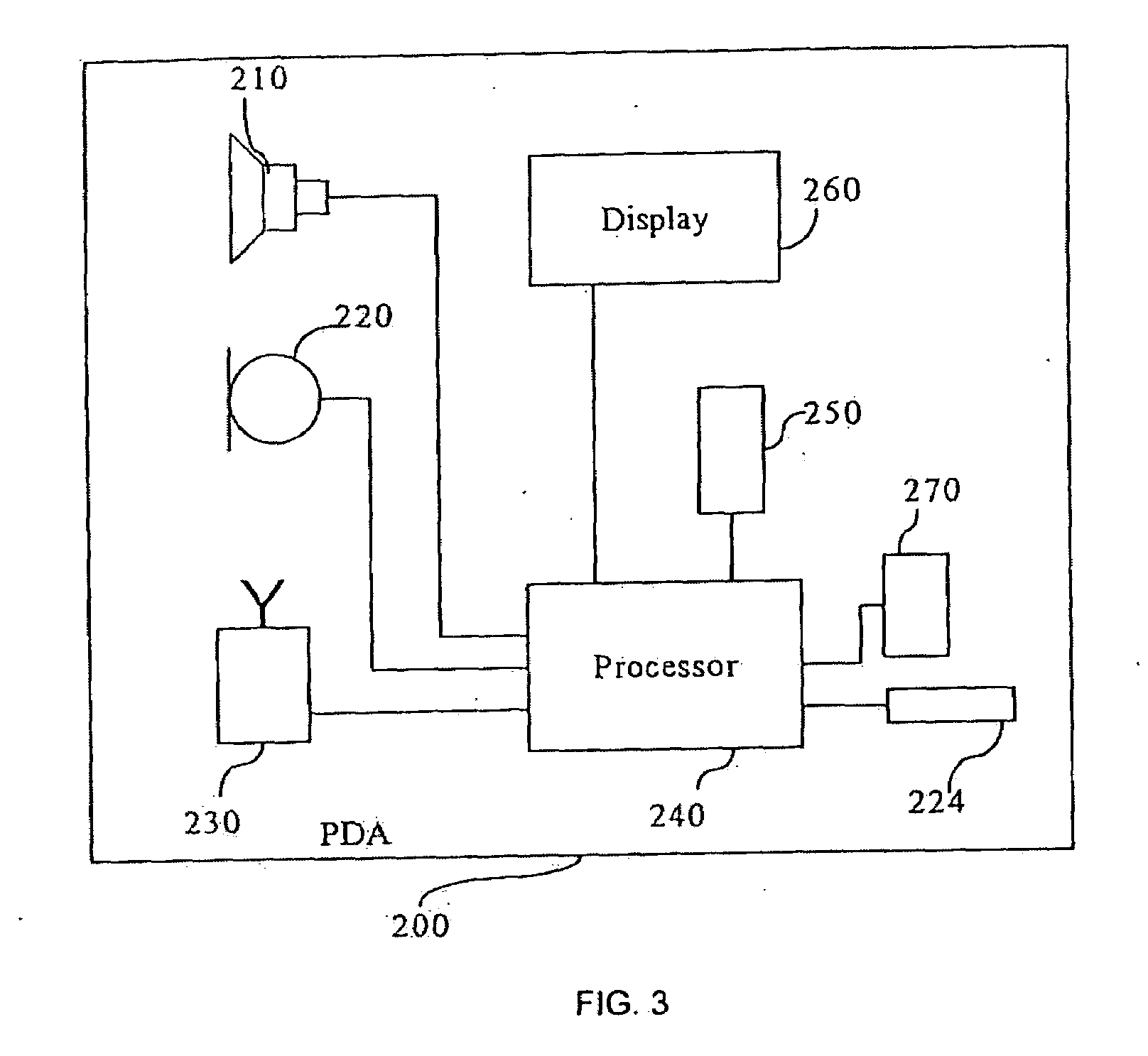Device authentication in a PKI
a wireless device and authentication method technology, applied in the field of cryptography, can solve the problems of limited application range of wireless devices, inability to always interoperate, and easy interception of radio signals, and achieve the effect of minimizing eavesdropping or man-in-the-middle attacks and advantageously avoiding interferen
- Summary
- Abstract
- Description
- Claims
- Application Information
AI Technical Summary
Benefits of technology
Problems solved by technology
Method used
Image
Examples
Embodiment Construction
[0035]FIG. 1 shows a communication system 10 having a first correspondent 20 in a communication with a second correspondent 30 over a radio frequency (RF) link 32. A cryptographic engine 34 using a symmetric key 36 established during a public key exchange encrypts such communication. The first correspondent 20 is designated an authenticating device and the second correspondent 30 is designated an authenticated device. In the preferred embodiment, the authenticating device 20 may be a mobile telephone 100 or a personal digital assistant 200 as shown in FIGS. 2 and 3 respectively, and the second authenticated device 30, a headset 300.
[0036]Generally, the mobile telephone 100 includes a processor 110 for executing an instruction set for the operation of the mobile telephone handset 100, including instruction to perform the link key establishment. The processor 110 preferably includes a microprocessor and a digital signal processor for manipulating different types of information, such a...
PUM
 Login to View More
Login to View More Abstract
Description
Claims
Application Information
 Login to View More
Login to View More - R&D
- Intellectual Property
- Life Sciences
- Materials
- Tech Scout
- Unparalleled Data Quality
- Higher Quality Content
- 60% Fewer Hallucinations
Browse by: Latest US Patents, China's latest patents, Technical Efficacy Thesaurus, Application Domain, Technology Topic, Popular Technical Reports.
© 2025 PatSnap. All rights reserved.Legal|Privacy policy|Modern Slavery Act Transparency Statement|Sitemap|About US| Contact US: help@patsnap.com



